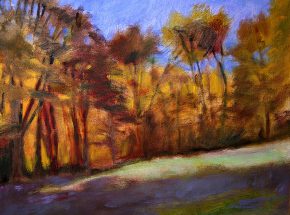

Milton Avery’s roots lie in the conjunction of American regionalism and European and American impressionism. While Avery began as a relatively traditional painter in the 1920s, his style quickly ran counter to the social realism of the time. He combined elements of American impressionism with the simplified shapes of Matisse to forge a unique style that became increasingly abstract later in his career.
Milton Avery was born at Sand Bank, New York and beginning in 1905, Avery began attending the Connecticut League of Art Students in Hartford, where he remained an occasional life drawing student through 1919. He moved to New York in 1925, the decades that followed saw him show work at numerous exhibitions mounted by New York galleries and American museums. Avery’s preoccupation with French Fauvism and German Expressionism led him to develop a simplified formal idiom distinguished by clarity of line and an expressive palette. Even though his style was close to abstraction, Avery nonetheless clung to representation throughout his entire career. Classical motifs and subject matter in portraits, still lifes and coastal landscapes were his main thematic areas and genres. Prolific as a painter, graphic artist and ceramist, Avery received numerous awards from American art institutions before he died in 1965 although he only really became famous posthumously. Now he is acclaimed as one of the most influential US 20th-century artists.
Website
http://www.milton-avery.com








